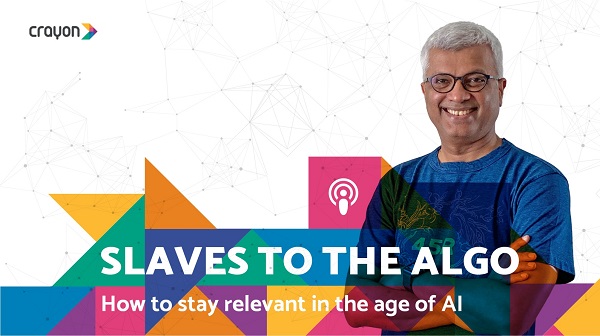The world seems to be fueling a dystopian view of what artificial intelligence (AI) can do. However, no machine can ever be imbued with the intelligence of a human; they slavishly follow indefinite program conditions which have already been laid down by a smart programmer. With the increase in technology advancments, Gartner foresees a shift. From stand-alone intelligent things to a collaborative swarm network of AI systems.
It shouldn’t come to any surprise that workspaces all across the globe are being reshaped. By disruptive technology day in day out. Moreover, they have the power to automate mundane job operations usually done by humans. Which is a piece of great news, isn’t it! As a result, such tech will carry out more complex tasks. And slowly but steadily decrease the number of jobs for humans. Some of you guys believe that AI is a threat taking our jobs. While there are people who know they need to focus on the other half of the picture.
Early adoption has already begun. Take a look around. You will find virtual assistants, fraud detection and driver-less cars. With the emergence of automation, speech recognition, machine learning, decision-making, and natural language processing, the world is poised to transform itself in the future.
It may quite interest you to know that certain universities have started preparing their pupils for the 360° change. The rosy future of AI is inevitable, and if you are interested, you must pursue career possibilities focused on data science, machine learning, or advanced statistics. It may also interest you to know that McKinsey predicts that AI will replace up to 800 million jobs by 2030.
But the question is, how?
Curriculum requirements
First and foremost, educational institutes need to be honest with their budding employees. They need to learn some jobs are going to have let go- there’s no way around. Apart from this, try to recommit to the skills that are most resilient against automation. I am talking about incorporating certain skills such as pattern recognition, enterprise planning, process optimization, information retrieval in their curriculum. Also incorporate Social and emotional skills, creativity, Problem-solving.
Drawing conclusions about people’s state of mind. If simply put, repetitive tasks such as data entry and some kinds of business planning can be automated. In fact, you will find certain roles depending on the employee’s leadership and interpersonal skills, solve problems using unorthodox methods and ability to judge emotions and states of mind, generate creative content, etc. Tech giants like Microsoft give education and job experience a back seat. They have recognize the value of soft skills in fast-moving industries.
At the college level, it’s time for organizations to revive their courses. In context to coding, computer engineering, data science, analytics and other fields. Ones that contribute to advancement in machine learning, AI, IT architecture, industrial control systems, and robotics. At the same time, do not forget to focus on resilient competencies. Such as critical thinking, teamwork, interpersonal skills, leadership, and entrepreneurship.
Now gone are the days when having a strong knowledge base, problem analytical skills, design, and use of a plethora of engineering tools made you succeed. Today, much like technical stuff; non–technical skills grow in demand in ways that may directly or indirectly affect the society and the environment. Also, make sure that your students take complementary studies. Including humanities, raising awareness of the role and impact of engineering on society and culture courses in other disciplines.
Projects with corporations
Unfortunately, I don’t see more and more universities offering classes driven by projects with a corporation. I believe every student should have the opportunity to take courses that enable them to see how their academic curriculum is setting them up for their careers in the new machine-driven world. Getting out of your classrooms will only make you understand the relevance of emerging job opportunities.
Mentorship programs
With the vast amount of opportunities available, it is pretty evident for students to become overwhelmed. Mentors can aid them in gaining insights into how to set up their careers, utilize technology, and select the best employer. Additionally, they can offer support throughout the ups and downs of choosing a career path in the new AI world. And this is very easy as you will come across many alumni’s who wish to stay connected with current students resulting in transforming the current job market.
For companies
If you own a company, especially the one which plans to automate specific roles, make sure you don’t create a living where uncertainty is everything. For example, the CEO or any other decision-maker shouldn’t break the news about coming automation opportunities. And leave the workforce wondering who will be getting the ax. Remember, your employees deserve a chance too. And maybe that’s the reason why they begin to look for different ways to educate themselves into a higher-paying and more demanding role than they have now.
In addition to this, companies should uplift employees into higher-order roles. By doing this, one can surely achieve a productive synergy between humans and machines that limits job loss. At the same time, you will be able to prepare the entire workforce for a rising tide in new jobs in automation support, IT, data science, and robotics.
As a society, it brings everyone else’s role in this. Do you think is there something mainstream society can do to prepare for AI in the workforce? Of course, only when we start taking automation, AI, and the green energy transition as seriously as the rest.
For example, our changing times mean “radical” proposals are reaching the halls of government. Like the Green New Deal. Which would help re-train U.S. employees for the changing economy. As well as offers a national job guarantee. Which helps force the public and private sectors to invest in people as well as machines. It’s worth taking notice and seeing which kinds of programs could more than pay for the investment required.























